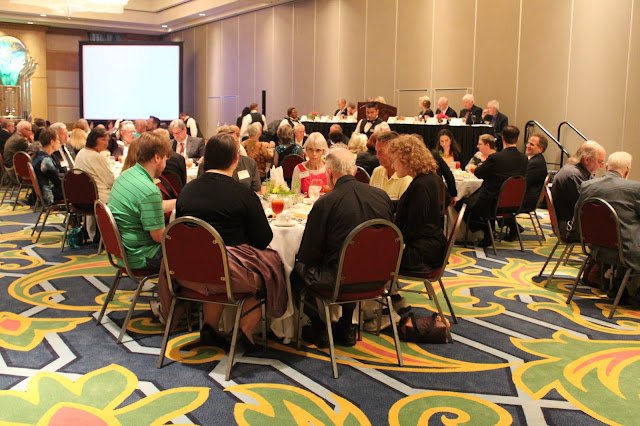
The story of the ETHA is the story of our people.
-
Board members, staff, and the distinguished Fellows of ETHA are the foundation of the association’s leadership. Click here to learn more about them.
-
Get to know some our members through these Pine Cone Profiles.
-
The first East Texas Historical Association began when W. F. Garner, chairman of the Department of History at Stephen F. Austin State Teachers College, now Stephen F. Austin State University, invited members of his faculty and of the faculties at Sam Houston State Teachers College and East Texas State Teachers College to form an organization to promote the study of East Texas history. The group met in Nacogdoches on April 29-30, 1927, and annually thereafter on college campuses in Huntsville, Commerce, and Nacogdoches until disbanded because of the Depression in 1932. An annual issue of papers read at the meetings was also published.
In 1962 a successor East Texas Historical Association came into being as a result of the work of Dr. Ralph W. Steen and Dr. C. K. Chamberlain, president and History Department chair at Stephen F. Austin State College, and attorneys F. I. Tucker of Nacogdoches and F. Lee Lawrence of Tyler. Lay and professional historians in East Texas received invitations to a meeting held on the SFA campus in Nacogdoches on September 29, 1962. They wrote a new constitution (revised in 1981), calling for an annual meeting each Fall in Nacogdoches and a Spring meeting elsewhere in East Texas; the publication of a semi-annual publication, the East Texas Historical Journal; and the collection and deposit of archival material in the library at Stephen F. Austin State College. F. Lee Lawrence served as the Association's first president, and Dr. C.K. Chamberlain became editor of the journal, a post he held until 1971. Because charter membership was left open for many months, 425 charter members are claimed. The practice of alternating lay and professional historians as officers was instituted, and continues. In addition to a president, first and second vice presidents, and a secretary-treasurer, nine additional members serve alternating, three-year terms on the Board of Directors, and SFASU appoints two ex-officio members.
Chamberlain retired as editor in 1971 and was succeeded by Archie P. McDonald, who serves as Executive Director, a position created in 1979, and editor of the Association's journal and other publications. The Association is housed on the campus of Stephen F. Austin State University in Nacogdoches, and continues to publish two issues of its journal annually. Membership and attendance at meetings declined late in the 1960s, but has rebounded. Membership today remains steady at about 600 in all categories and registrations at meetings varies from 150 to 175, depending upon the location of the Spring meeting.
Since 1971 the Association has established new programs to encourage the study of East Texas history and to honor those who do so. For example, the C. K. Chamberlain Award honors the article judged (by a panel of peers) the best to appear in the East Texas Historical Journal within a year; a constitutional limit of twenty-five fellows are honored for writings on the history of East Texas; the Ralph W. Steen Award honors those who have served the Association through activities primarily other than writing; the Lucille Terry Historical Preservation Award, also sponsored by the Texas Forestry Museum, honors outstanding works of historical preservation; and the Ottis Lock Endowment Awards honors outstanding teaching, the best book on East Texas each year, and research grants for those who study East Texas historical topics. And in 2000, Bob and Doris Bowman of Lufkin presented the inaugural Best of East Texas Award to Bob Murphey of Nacogdoches.
-
For our 60th anniversary, the ETHA has unveiled a new logo and an updated website. Learn more here.
-